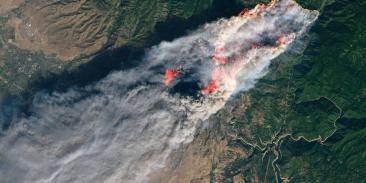New Water Pollution Trading Program Lacks Cap To Ensure Effectiveness
(13 January, 2003 — Washington, DC) Environmental Defense today raised questions about the impact of a newly proposed water pollution trading policy announced by the U.S. Environmental Protection Agency (EPA).
“Environmental Defense has long supported pollution trading systems to enable industry to meet environmental standards faster and with greater flexibility. Under the right rules, water pollution trading can lower costs and help speed the clean-up of the nation’s waterways,” said Environmental Defense senior attorney Tim Searchinger.
But without a cap to limit overall pollution levels, Searchinger questioned whether the proposal could meet the goal of protecting water quality and the nation’s rivers, lakes and streams.
“For trading to be effective, the total amount of pollution should be capped from all key sources. This cap is at the heart of this country’s successful controls for acid rain. Without a cap, trades may not reduce pollution, but merely reallocate it among sources,” Searchinger said.
The future effectiveness of the new trading policy is seriously clouded by two recent announcements by EPA. In December of last year, the agency proposed to rescind rules that would establish total pollution limits for all water bodies. Without the limits, there is significant doubt about whether effective caps will be in place for the trading program. In addition, the administration last week announced a proposal to limit federal protections for certain wetlands and other water bodies.
“The trading policy is dwarfed by last week’s announcement by the Bush administration that it will reconsider the rule that says which rivers, wetlands and bays are protected under the Clean Water Act in the first place. Careful review of this notice shows that it may not be limited to isolated wetlands but could exempt most other wetlands and streams from clean water protections,” Searchinger said. “It is not possible or practical to require clean water downstream even in large rivers if pollution is not controlled upstream.”
“Trading is only a tool for helping controls work better. Trading will become beside the point if most of this country’s rivers, bays and wetlands become ‘free’ pollution zones,” Searchinger said.
With more than 3 million members, Environmental Defense Fund creates transformational solutions to the most serious environmental problems. To do so, EDF links science, economics, law, and innovative private-sector partnerships to turn solutions into action. edf.org
Latest press releases
-
EU Methane Regulation Emerges As Strategic Tool For Energy Security
December 10, 2025 -
Court Strikes Down Trump Administration’s Reckless Wind Energy Permitting Ban
December 8, 2025 -
Court Orders Trump Administration to Release Records of Secret Group That Wrote Report Attacking Climate Science
December 8, 2025 -
COMING SOON: An effort to weaken our popular chemical safety law
December 8, 2025 -
Groups File Lawsuit Challenging Trump EPA Final Rule That Delays Methane Pollution Protections from Oil and Gas Industry
December 4, 2025 -
New Statewide Survey: As Electricity Demand and Costs Skyrocket, Arizonans Support Building More Wind and Solar Energy
December 4, 2025










